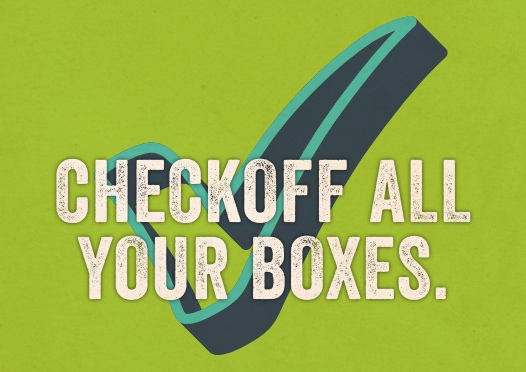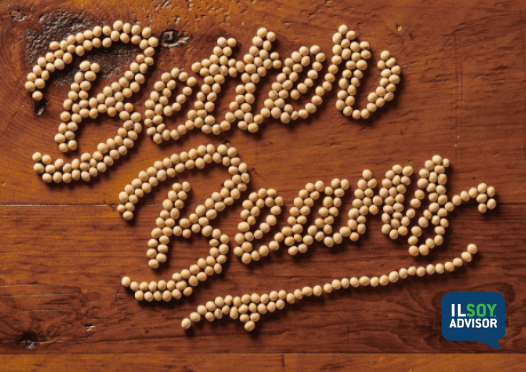ILSOYADVISOR POST
Ag PhD Field Day - Greatest Show on Earth
I have been wanting to attend the Ag PhD Field Day for a long time, so I took the opportunity this year to attend with some growers. This event is billed as the “world’s biggest field day,” boasting on average 10,000 attendees from across the U.S. and around globe. Based on the size of the parking lot and number of cars, I would guess there was probably less than that, but still thousands of attendees.
Two decades ago AgriGrowth™, a southern Minnesota company, sponsored Challenge Days at four sites across the Corn Belt for 4 or 5 years. I was working for AgriGrowth during those years and the Ag PhD Field Day footprint reminded me of the Challenge Days footprint back then. But only a few of us “old-timers” would recognize that similarity.
What were my expectations? First, I wanted to see this spectacle for myself and how you bring in thousands of farmers together in one spot. I have been involved in organizing soybean field days for the last six years, and we only draw in a couple hundred attendees. Of course, we don’t have the reach of the Ag PhD, their RFD-TV program and Sirius XM radio show to communicate with and recruit farmers.
Second, I wanted to learn new facts about agronomy and soils, since I’m a sponge for valuable and interesting information. I admit that I really didn’t learn any new facts and I was a bit disappointed by the content. This was not organized like a regular field day, where there are educational stops and presentations by experts like I expected. For me, as an agronomist and CCA, it’s important for me to learn everything I can to get better at what I do.
Third, I always want to network with farmers and other professionals. There was an excellent opportunity to network, if you took advantage of it. Since it was my first time attending and learning how things worked, I wasn’t efficient at taking advantage of the opportunities afforded me. Next year will be different.
And while I didn’t learn many new facts directly there were opportunities to learn. When the show opened at 8 a.m., they led a tour across the show site pointing out displays, plots and sponsors, inviting growers to stop, talk and learn. Despite no formal educational presentations from experts, attendees had ample time to visit plots and displays and talk to representatives, hopefully taking home some new ideas for their farm.
Probably the most valuable portions of the day were the 1-hour Q & A sessions with corn, soybean and wheat yield champions from across the Corn Belt. Bob Hecht, an agronomist with Soil Solutions, Inc. said, “It was a good day, I got to see many people I know and heard many viewpoints on high-yield crops.” Listening to the yield champs answer questions was a big part of the day. And even though I didn’t leave with a notebook of new facts I came away with new perspectives and some ideas which made the trip worthwhile.
In the first session, I listened to Illinois grower, Dan Arkels, and Arkansas grower, Perry Galloway, answer questions about high-yield soybeans. I was bold enough to ask Galloway about controlling Palmer and using dicamba and the following conversation consumed half an hour. Dicamba is such a hot topic and we could see signs of dicamba damage in the field day plots around the site. Galloway said his number one thing is the importance of timing with everything you do in the field. And Arkels added that his number one thing he learned is adding a starter and biological in-furrow at planting.
The second session I attended was presented by Dave Hula, a national corn champ from Virginia. He is always asking questions and encourages farmers to do the same, have a very positive attitude and be aggressive with their own on-farm testing.
Randy Dowdy answered questions during the third session to a packed tent. He is a big proponent of tissue testing weekly and advocates that tissue testing sufficiency levels today are inadequate for the yield of tomorrow and for those winning yield contests. He is involved in an effort with farmers to collect yield, tissue test and soil test data from hundreds of fields to see if sufficiency levels are lacking. His biggest takeaway is learning to ask the right questions, which he’s very capable of doing.
Dowdy answered many questions, many which gave us pause to think and some were even contrary to my agronomy training. It was during this session that I got my “interesting fact for the day” when Dowdy said that at summer solstice, he wants his soybean plants to have a pod at the bottom of the plant at R4 and the top of the plant to be at R1.
I recognize this to be very important and a benefit of early planting and the right maturity selection. My reaction was that having an R4 pod on June 21 is probably a good metric for producing high-yield soybeans, but how do growers achieve that? While Dowdy can achieve this in Georgia, can we do it in Illinois or Wisconsin? Many of the things Dowdy says gave everyone pause, like the corn and soybean school he put on last January in Bloomington.
Dowdy is a good presenter and educator and is willing to share information and encourages growers to do the same. He finds all the secrecy out there between neighboring farmers puzzling and counter-productive. Dowdy’s ease and engagement with an audience, presentation style and story-telling ability could have led him to another career in comedy, but then we would haven’t a 171-bushel bean yield record either.
Soybean agronomist Daniel Davidson, Ph.D. posts blogs on agronomy-related topics. Feel free to contact him at djdavidson@agwrite.com or 402-649-5919.





Comments
Add new comment